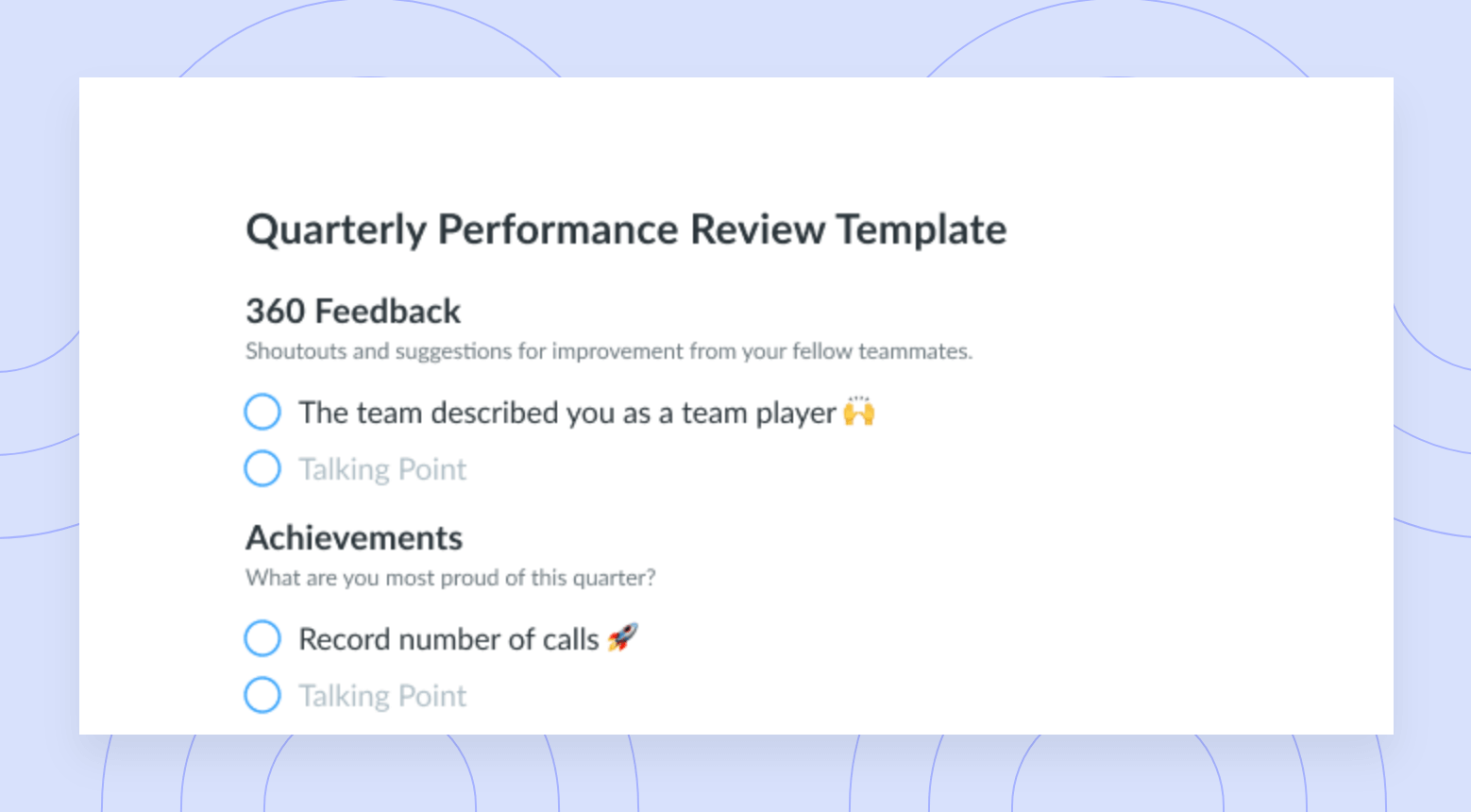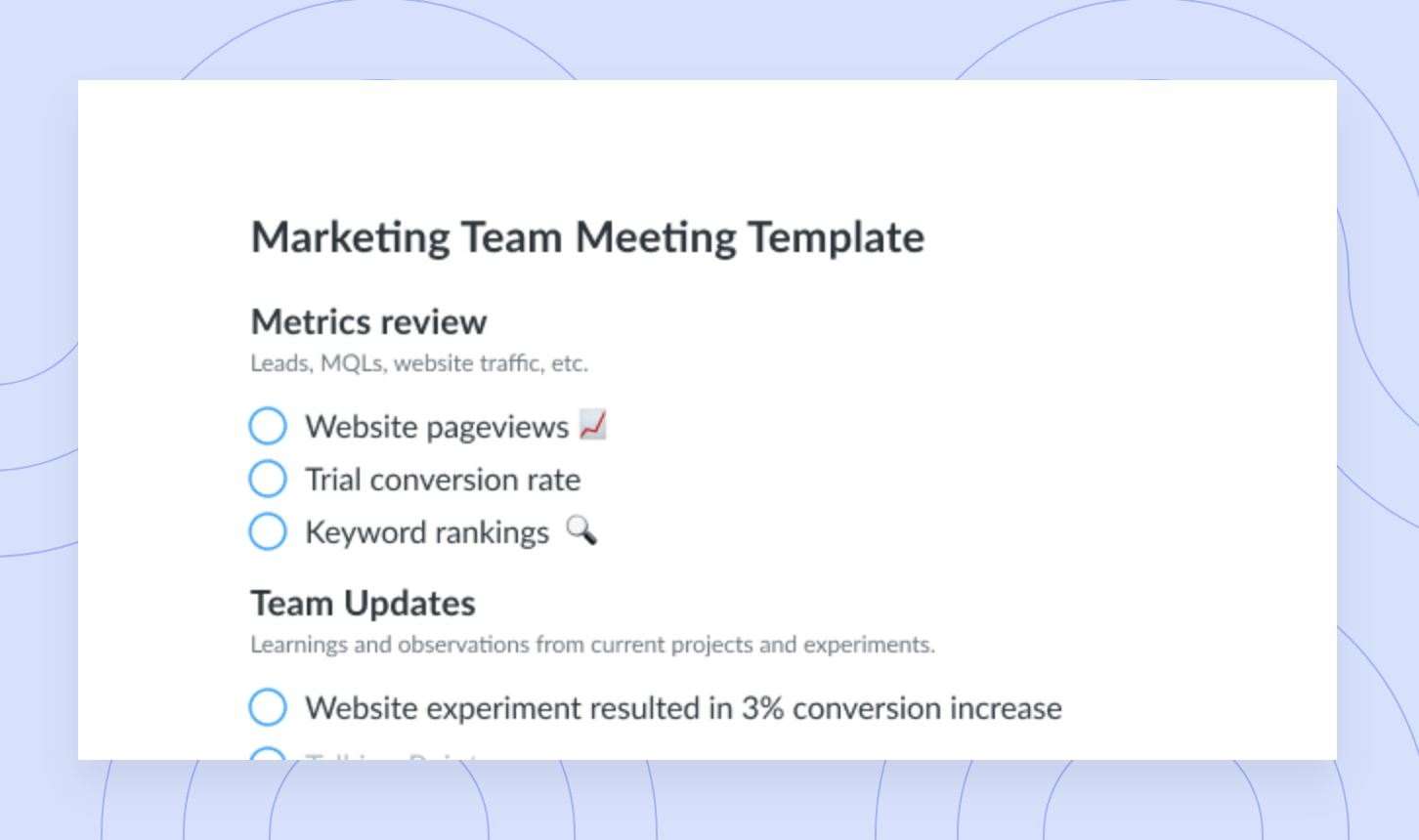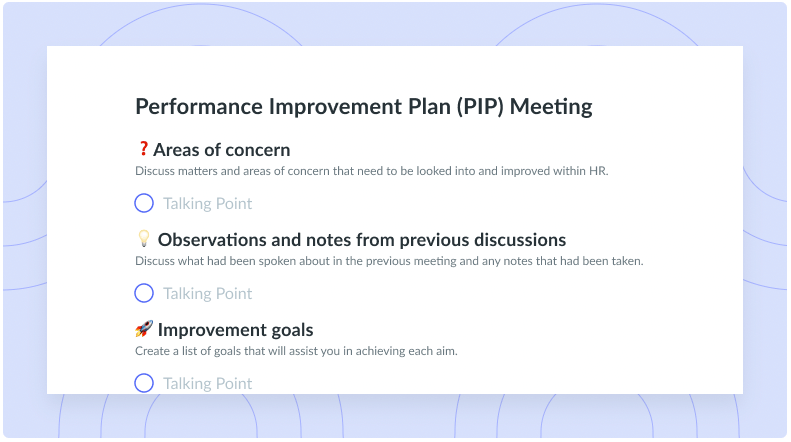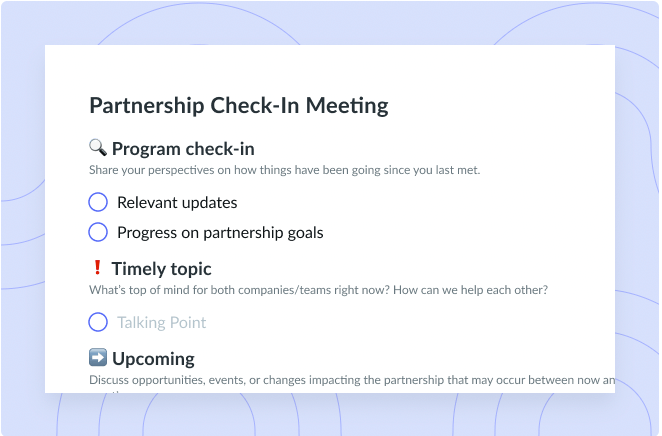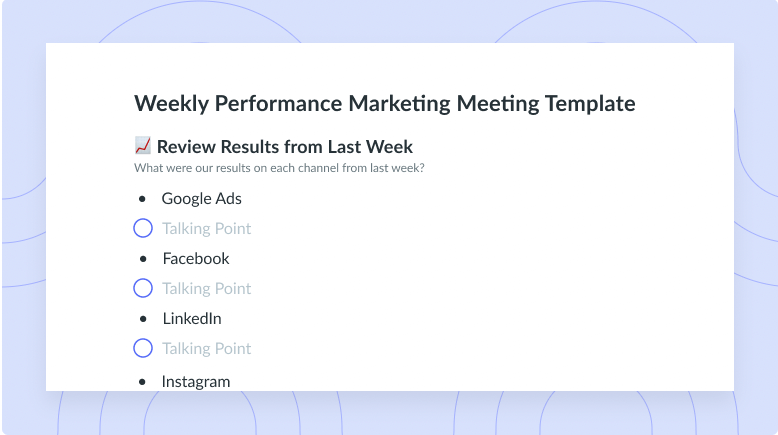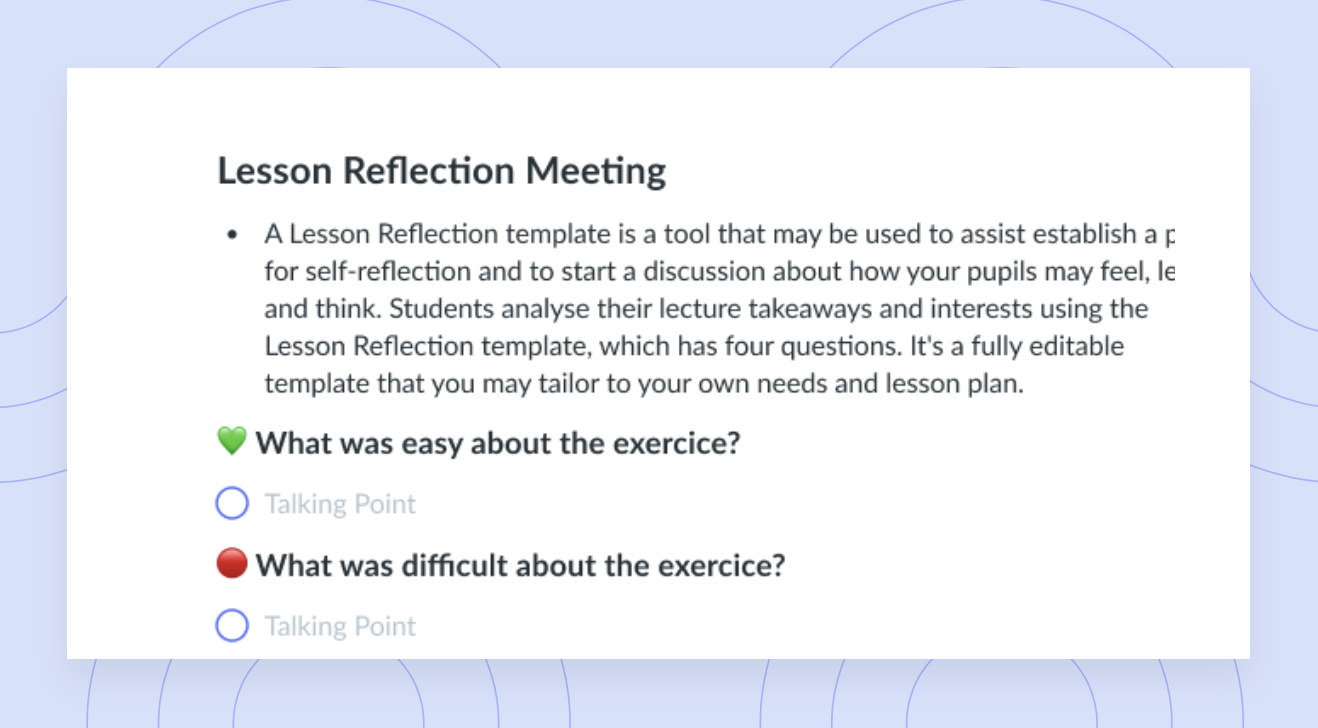10 Effective Strategies to Improve Employee Performance [+ Free Template]
Improve employee performance by building trust, fostering transparency, and implementing stretch goals.
In a world that’s constantly changing, no one can afford to remain stagnant. A complacent workplace that fails to invest in its employees will fall behind and lose its talent to competing organizations. If you want to foster a high-performing workplace, you need to put systems in place that empower your employees to do their best work. Improving employee performance in the workplace can be difficult—especially if you don’t know where to start. Keep reading to unlock 10 effective strategies to improve employee performance!
- What is the definition of high performance?
- Why is it important to improve employee performance?
- How to measure employee performance
- 10 strategies to improve employee performance
- Free performance improvement plan template
What is the definition of high performance?
Simply put, high performance refers to an individual or group of people that are better, faster, or more efficient than others. In the workplace, high-performing employees are skilled at what they do and continuously prioritize quality over quantity. They are reliable, demonstrate exceptional effort, and are always willing to go above and beyond to meet expectations.
Why is it important to improve employee performance?
Improving employee performance is important for several reasons, including accomplishing goals in a timely and cost-effective manner, improving employee satisfaction and reducing turnover, and meeting targets, benchmarks, and shared goals. Not only does taking a continuous approach to performance management ensure that your employees are working towards objectives that will allow them to get the most out of their skills and roles, but doing so will also create a more positive workplace. Failing to prioritize employee performance may lead to employees who feel detached from their team, which can ultimately lead to a higher turnover rate.

Meetings worth showing up to
A well-run meeting can foster communication and collaboration by including an agenda the whole team can contribute to. Try using a tool like Fellow!

How to measure employee performance
When measuring employee performance it’s important to ask yourself questions like: “What makes X employee’s performance stand out from that of their peers?” and “How does their output differ from their less productive peers in the same role?” Before measuring employee performance, you’ll first need to identify what success looks like. To get started, set a performance baseline and identify each role’s strategic impact. This means fleshing out what specific outcomes each employee in each role must consistently produce to be considered high performing.
10 strategies to improve employee performance
- Have regular one-on-ones
- Communicate with transparency
- Personalize recognition
- Practice active listening
- Ask for and give feedback
- Value their opinions
- Avoid micromanaging
- Encourage stretch goals
- Offer incentives
- Embrace flexibility and async communication
1Have regular one-on-ones
Hosting frequent one-on-one meetings is the key to improving and sustaining employee performance. By hosting regular one-on-one meetings, you can discuss your employee’s progress as it pertains to specified goals and benchmarks, address any concerns or challenges that may cause roadblocks, and provide feedback or guidance on how to be more successful in the future. These encounters are an excellent way to make employees feel supported and valued as they move towards achieving shared goals.
Did you know that Fellow makes it possible for managers and team members to schedule, organize, and track their one-on-one meetings? This feature can help improve employee performance by facilitating regular communication and feedback between managers and their direct reports.
2Communicate with transparency
Communicating transparently is a fundamental part of building trust. Without transparency and trust, you won’t be able to create an open line of communication between management and employees. This means employees won’t feel comfortable speaking up if they hit a roadblock or need support. To empower high-performing teams, you’ll need to create an open line of communication where feedback flows freely.
3Personalize recognition
Recognition in the workplace is incredibly important for many reasons, including boosting morale, fostering collaboration, and retaining top talent. While expressing your gratitude is important, it’s equally important to take an individualized approach. It’s important to note that how one employee prefers to receive feedback may vary from the next. If you take a cookie-cutter approach, your employees may see your recognition as disingenuous.
4Practice active listening
In a remote first landscape where employees tend to feel disconnected from their peers and superiors, active listening is now more important than ever. If you fail to practice active listening during one-on-ones or team meetings, your direct reports may feel as though you aren’t interested in what they have to say. As a result, they may refrain from speaking up or contributing when their talents or expertise are necessary. There are several simple tactics that you can take to practice active listening, including listening and nodding your head while others are talking and following up with impactful questions when they finish speaking.
5Ask for and give feedback
Asking for and receiving feedback is a crucial practice in high-performing teams. Providing feedback will give your employees the insights necessary to improve, and asking for feedback will do the same for you. While providing feedback tends to be a regular practice for managers, it is often taboo for managers to request feedback. It’s important to remember that requesting feedback is just as important as providing it. Not only will doing so help you improve as a people manager, but it will also demonstrate to your team that their opinions matter and that you’re willing to step up and make improvements when necessary.
6Value their opinions
It can be incredibly detrimental to the well-being of your employees if they feel as though their opinions aren’t valued. Not only will this lead to less engaged, less motivated employees but it will also create a culture of resentment. If you want your employees to perform to the best of their abilities, they need to feel that their contributions and opinions are valued and necessary. You can make sure your employees feel their opinions are valued by asking for their insights, including them in decision-making conversations, and implementing their suggestions when applicable.
7Avoid micromanaging
Not only does micromanaging your staff lead to underperforming and unmotivated employees, but it also means your employees will constantly look to you for guidance as opposed to having the confidence they need to do their best work without your input. Additionally, micromanaging your employees will make your team feel as though they need your constant approval, which will ultimately take a toll on your schedule and energy.
8Encourage stretch goals
Stretch goals are ambitious goals that challenge your teammates to step outside their comfort zones by pushing boundaries and challenging the status quo. While stretch goals may not be for everyone, they are especially important for managers who are eager to improve employee performance. Setting stretch goals will give your employees the push they need to step up their game.
9Offer incentives
Improving employee performance can be difficult—especially when your team may feel as though they don’t have a reason to try harder. Offering incentives is a great way to let your employees know that their hard work and dedication will pay off. Instead of asking them to do something for nothing, reward their positive contributions with incentives. Incentives can be anything from paid time off, gift cards, bonuses, meals, wellness programs, or even professional development opportunities.
10Embrace flexibility and async communication
It’s no secret that the way we work is rapidly changing. Gone are the days of traveling to an office and working a traditional 9-5. Instead, progressive workplaces are largely choosing to embrace a remote model where employees can communicate asynchronously and work within their energy levels. If you come to realize that your team members may not be performing to the best of their abilities, it may be because they don’t have the opportunity to work in alignment with their energy levels. Instead, consider encouraging employees to work when they feel most energized. This may mean doing a couple of hours of deep work before the rest of the team has logged on or hammering out a project at 8 p.m.
Free performance improvement plan template
A performance improvement plan (PIP) is a framework used by employers to gauge employee success. Often used to help employees improve performance, performance improvement plans come into play when an employee may not be performing to the best of their ability. A comprehensive PIP will detail what is expected of the employee, what they must improve on, and how they can improve with step-by-step guidelines. Are you preparing to help your team level up with a comprehensive performance improvement plan? Leverage this free performance plan improvement template inspired by the University of Central Arkansas to identify critical areas of concern, performance gaps, and expectations, as well as to demonstrate improvement and commitment.
Are you ready to improve employee performance?
While it may seem like a large undertaking, improving employee performance can increase trust while ensuring your teammates feel supported and empowered. From providing feedback regularly to setting clear expectations, there are many strategies and tactics you can use to boost morale as well as performance. By implementing these tips, you can ensure that your employees feel engaged, motivated, and ready to reach their full potential!
![Effective Performance Improvement Plan [+ Free Template]](https://fellow.app/wp-content/uploads/2023/04/Performance-Improvement-Plan3.jpg)


![Quarterly Planning: Ultimate Guide for 2024 [+Free Template]](https://fellow.app/wp-content/uploads/2023/03/GUIDETO-QUARTERLY-PLANNING2.jpg)





